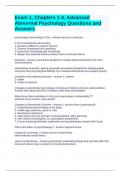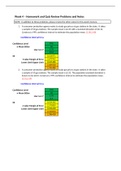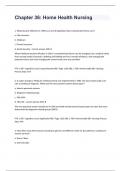Examen
Exam 1, Chapters 1-4, Advanced Abnormal Psychology Questions and Answers
- Cours
- Établissement
psychological abnormality (4 D's) - Answer-focuses on behavior 4 D's to characterize abnormality: 1. Deviance (different, extreme, bizarre) 2. Distress (unpleasant and upsetting) 3. dysfunction (interfering with functioning) 4. danger (has potential to/does produce harm to self and others) ...
[Montrer plus]












